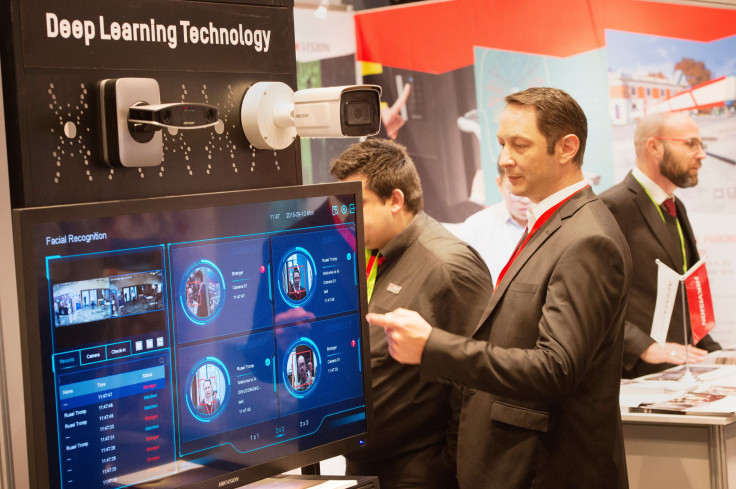Does AI Really Have A Place In The Modern UC Workplace?

Enterprise technology is now advancing at breakneck speed and businesses are fighting to stay on top of it in the race to achieve full digital transformation. Companies are constantly growing and intelligent communication systems, which offer seamless interaction for large workforces, are now fundamental in the modern workplace.
Utilizing digital tools to improve efficiency and employee workflow has led to the continued rise of Unified Communications (UC) systems, as companies look to the latest technologies to enhance collaboration and increase productivity. With smart interactions at its core, UC have become deeply ingrained in the modern workplace and are now enabling real-time communications and better ways of working for fast-growing teams.
With the global UC market expected to grow to $143 billion in value by 2024, there is no doubt that companies will continue to invest heavily in technology to enhance the communication capabilities of their staff help simplify tasks and better connect their business.
AI in the enterprise
Artificial Intelligence in the modern workplace is now a huge talking point across the business landscape. Its ability to enable sophisticated predictive intelligence has garnered many column inches and companies are now experimenting with the technology in various areas of the business. So much so AI is now positioned as a key driver of the enterprise in years to come, with 91 percent of enterprises expecting AI to deliver new business growth by 2023.
Workplace communication is undergoing its own digital transformation and the power of AI is now being heavily discussed in relation to the next generation of UC-based systems. By analyzing data better and faster, AI has the ability to save time, enhance employee experiences and drive collaboration across entire workforces, through the addition of more sophisticated communication features. For example, interactive whiteboards, cloud-based collaboration software and document management tools now all sit comfortably within the realm of UC.
Furthermore, AI and machine learning systems can use existing workforce data to enable predictive intelligence which can map out the specific requirements for future communications across the workplace. Using intelligent analysis, tasks such as outlining the appropriate team members required for certain communications and the most suitable time for meetings to occur can be anticipated and automatically booked in. Making these decisions faster can therefore not only reduce the time spent on manual team coordination but also free up more time for employees to concentrate on important tasks and allow effective collaboration to take place.
From the home to the office
AI continues to make huge waves across the consumer space and is now used widely by individuals across a range of devices - in their home, on their mobile and even in their vehicles. While there are still challenges with wide implementation, some technology providers are now finding ways to integrate popular AI-based technologies into existing UC systems.
There are many powerful consumer based-AI tools being added to UC conversations, such as Cortana, Alexa, and the toolsets in Google Home that we will all be able to access and build solutions off of. However, it is now more practical to use innovative startup technology in this space to deploy customized workflows and integrations that are both flexible and tailored to immediate needs.
Building customized AI assistant applications using the Zoom AI powerset, for example, can now be added to Microsoft Teams or other major chat interfaces and program customized workflows in hours, when in the past this could even take years. The Microsoft Azure stack also opens businesses up to using into ready to go APIs that leverage facial recognition, live translation services, and even video clip search tools in Microsoft Stream to make your AI-driven assistants even more powerful.
Future AI-enhanced UC systems could also open the modern workplace up to the possibilities of using automatic identification technologies, such as facial recognition to help staff enter and initiate meetings, authorize external attendees and track speakers throughout. Should AI be developed for the UC enterprise and used at scale, businesses can break down barriers to coherent workforce interaction, save time and energy for staff and make the communication experience better for everyone involved.
Overcoming the challenges
Yet, the rate at which it is developing comes not without its challenges. Despite the exciting possibilities, the technology still remains in its very formative stages across the UC sector. Early AI-enabled systems would require a significant investment from companies of both time and money to upgrade their communication systems and tailor features to the needs of staff members.
What’s more, these robust systems will also inevitably create a knowledge gap and will require significant training for staff to utilize these tools effectively. Companies thinking about an AI-based communications future must, therefore, take the necessary steps to provide staff with the tools and development needed to both access and benefit from the technology’s capabilities.
Looking ahead, an AI-enhanced future is most certainly on the horizon for UC. Its opportunity to overhaul outdated systems and make way for more intelligent communication, better decision-making and more productivity is clear and already showing some signs of its true value. Should AI continue its advance and overcome current barriers to adoption, employees can ultimately look forward to more intuitive communication in a UC-driven enterprise environment.
Scott McMaster is the managing director for Arkadin Americas, a global provider of cloud communication services and an NTT Communications company.
© Copyright IBTimes 2024. All rights reserved.





















